In today’s grocery aisles, many of our everyday staples have quietly transformed from affordable basics into budget-busting luxuries. From the drizzle of olive oil that once crowned our salads to the humble dozen eggs that anchored family breakfasts, rising prices are reshaping what—and how—we shop for food.
Climate challenges, supply chain snarls, labor shortages, and soaring transportation costs have all played their part in driving these spikes, turning once-simple grocery runs into exercises in price-checking and strategic substitutions.
For shoppers trying to keep meals wholesome without emptying their wallets, the reality stings: your favorite brands and ingredients might now carry a premium tag, forcing tough choices at the checkout. But fear not—this article is your roadmap to savvy savings.
While some items have become shockingly pricey, there are smart, budget-friendly alternatives that can keep your meals delicious, nutritious, and wallet-wise. From swapping out olive oil for canola, trading eggs for tofu, or opting for frozen berries instead of fresh, these easy switches help stretch your dollars without sacrificing flavor or health.
Whether you’re a seasoned home cook or a busy parent feeding hungry kids, understanding where to pivot can make a world of difference. We dive into 7 grocery items whose prices have soared and introduce you to 7 practical, tasty alternatives that won’t leave you sacrificing quality or nutrition.
Say goodbye to sticker shock and hello to smart shopping—because great meals don’t have to come with a hefty price tag.
1. Olive Oil
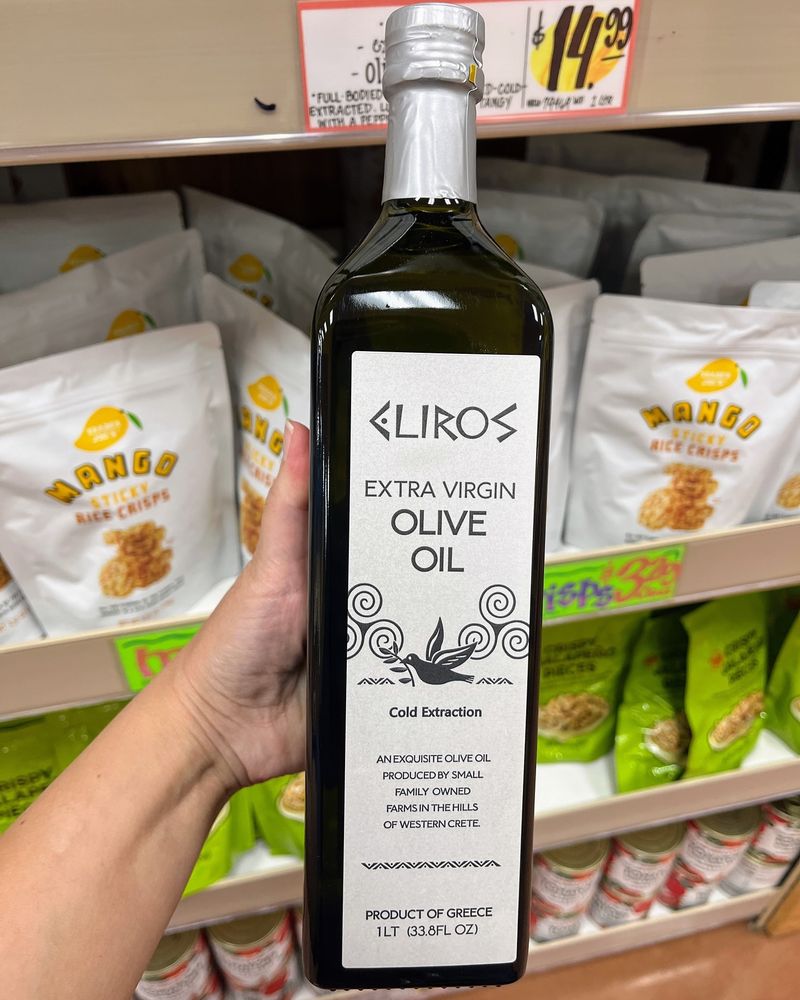
The price of olive oil has skyrocketed due to drought and disease affecting olive trees in major producing countries like Spain and Italy. A bottle that cost $10 a few years ago might now set you back $20 or more. Climate change and increased global demand have only worsened the situation.
Many shoppers experience genuine shock in the oil aisle these days. Premium extra virgin varieties have seen the most dramatic increases, with some bottles approaching luxury-item status. Even store brands haven’t escaped the price surge, leaving budget-conscious cooks frustrated when planning healthy meals.
2. Alternative: Canola Oil
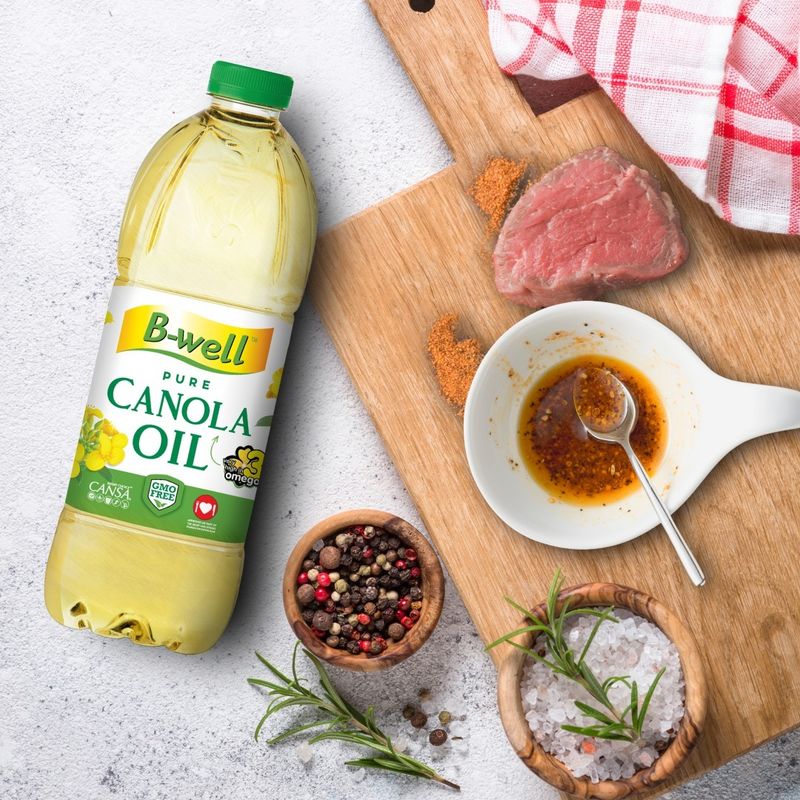
Canola oil offers a wallet-friendly substitute for olive oil in many cooking applications. Its mild flavor works wonderfully for baking, sautéing, and even some dressings where you don’t specifically need olive oil’s distinctive taste.
Health-wise, canola brings its own benefits to the table. Rich in heart-healthy monounsaturated fats and omega-3 fatty acids, it’s not just a compromise choice. The light taste actually makes it preferable for certain recipes where you don’t want a strong oil flavor competing with other ingredients.
A large bottle typically costs less than half the price of equivalent olive oil, making it an easy swap for everyday cooking needs.
3. Eggs

Remember when eggs were the go-to affordable protein? Those days seem long gone. Prices have nearly doubled in many areas, with a dozen eggs now costing $4-7 in some regions. The perfect storm of avian flu outbreaks, increased feed costs, and new animal welfare regulations has transformed this breakfast staple into a luxury item.
Families who relied on eggs as an economical meal solution now face difficult budget decisions. The versatility of eggs makes this price hike particularly painful. From breakfast to baking to quick dinners, eggs have traditionally been a pantry cornerstone that stretched food dollars.
4. Tofu
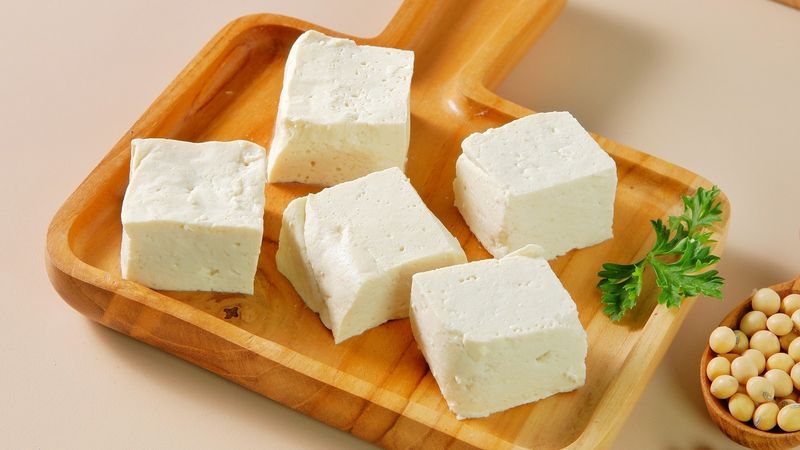
Tofu provides an excellent protein alternative that often costs less per serving than eggs. A block of tofu that makes 3-4 servings typically runs $2-3, delivering comparable protein with zero cholesterol. The mild flavor absorbs seasonings beautifully, making it incredibly versatile.
Morning scrambles made with crumbled tofu can closely mimic egg dishes when prepared with turmeric for color and black salt (kala namak) for that sulfurous egg-like flavor. For baking, commercial egg replacers or simple homemade alternatives like ground flaxseed mixed with water work surprisingly well.
Bonus: tofu stays fresh longer than eggs, reducing food waste.
5. Beef

Beef prices have surged dramatically, with popular cuts like ribeye and strip steak now luxury purchases for many households. Ground beef hasn’t escaped the trend either – what was once a budget-friendly dinner solution now strains grocery budgets nationwide. The average price per pound has jumped nearly 25% in recent years.
Multiple factors drive these increases: rising feed costs, labor shortages at processing plants, and transportation expenses. Supply chain disruptions during the pandemic created bottlenecks that the industry still hasn’t fully resolved.
Many shoppers report changing their meal plans entirely when seeing current beef prices displayed at the meat counter.
6. Alternative: Chicken Thighs
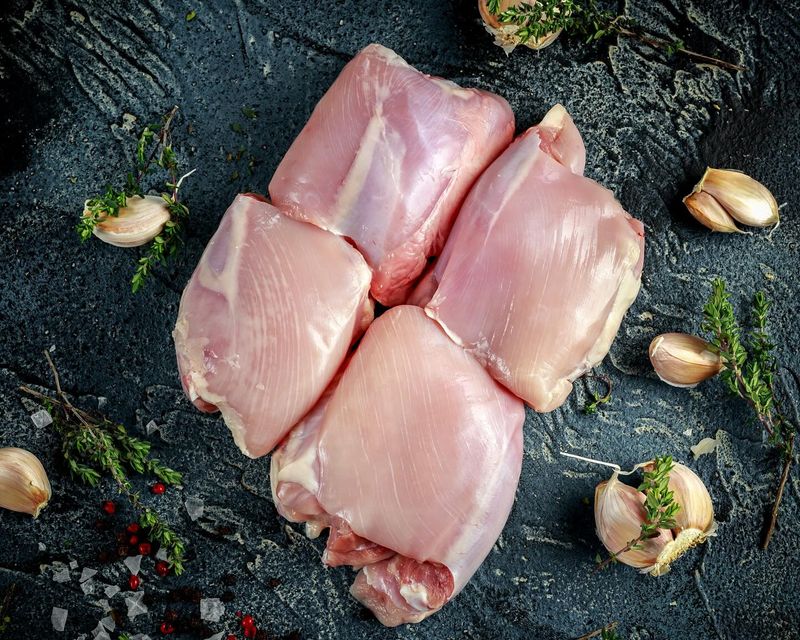
Chicken thighs deliver more flavor and moisture than their pricier counterparts – chicken breasts – while costing significantly less. These versatile dark meat cuts stay juicy even when cooked for extended periods, making them forgiving for novice cooks.
The higher fat content in thighs actually contributes to better flavor development. They’re perfect for slow cookers, grills, and sheet pan dinners. Many professional chefs prefer thighs for their superior taste and texture.
Budget bonus: buying family packs of thighs and freezing portions can stretch your meat dollar even further. A single package can provide protein for multiple meals at a fraction of beef’s cost.
7. Premium Coffee Bean
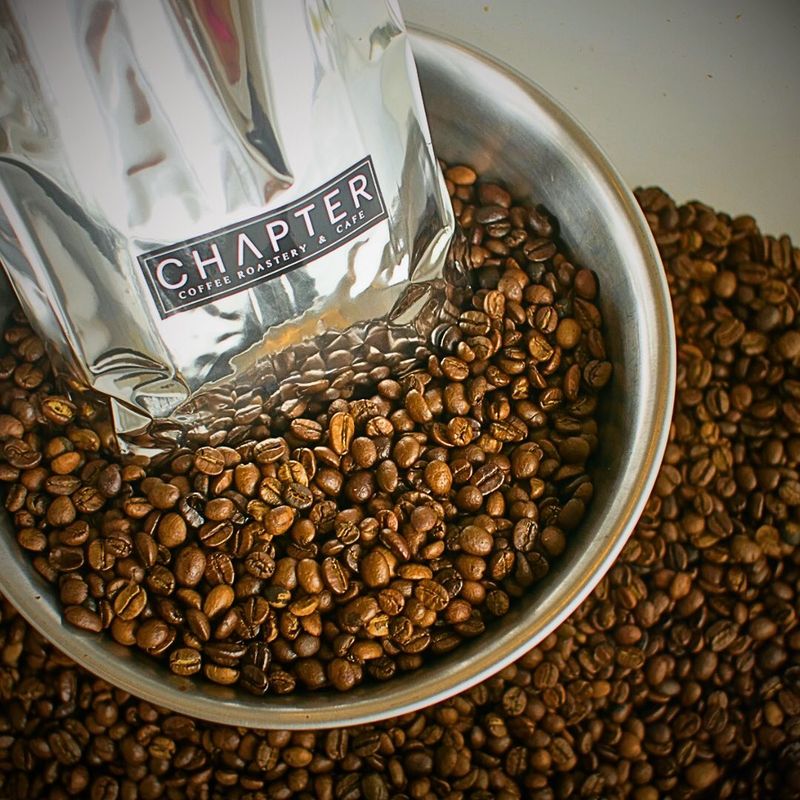
Coffee lovers have watched in dismay as specialty beans have climbed to unprecedented price points. A 12-ounce bag of premium beans from popular roasters now regularly exceeds $15-20 – a sharp increase from just a few years ago. Climate change has severely impacted growing regions, reducing yields and quality.
Labor shortages throughout the supply chain have added to costs, while shipping expenses have multiplied. For households where quality coffee is a daily ritual, this inflation hits particularly hard. The cumulative effect can add hundreds to annual grocery expenses.
Many coffee enthusiasts report scaling back their purchases or seeking alternatives to maintain their morning routine without breaking the bank.
8. Tea

Tea offers incredible value compared to premium coffee, with a single tea bag costing pennies while providing similar caffeine and an equally satisfying ritual. A box of 20-100 tea bags typically costs $3-7, providing weeks of daily enjoyment for the price of a single bag of coffee beans.
The variety is astounding – from robust black teas to delicate greens and herbal options. Many tea drinkers appreciate the cleaner energy boost without coffee’s potential jitters or afternoon crash. For those missing coffee’s richness, dark varieties like English Breakfast or Irish Breakfast provide comparable depth.
Tea’s longer shelf life also reduces waste, stretching your grocery dollar even further.
9. Name-Brand Cereal
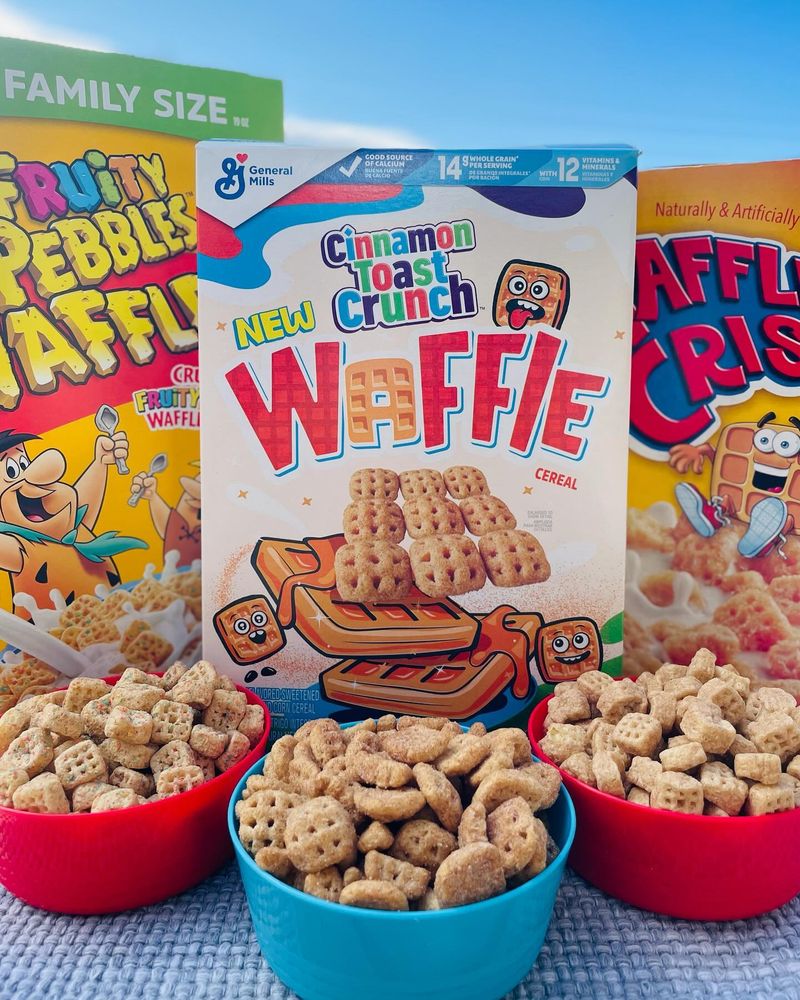
Popular cereal brands have quietly shrunk boxes while raising prices, creating a double-whammy for breakfast budgets. Boxes that once cost $3-4 now commonly sell for $5-7, with some premium varieties approaching $8. The stealthy reduction in package size – often decreasing from 18oz to 12oz – compounds the problem.
Families with cereal-loving kids feel this inflation acutely. A household going through several boxes weekly might see their monthly breakfast costs jump by $20-30 compared to just two years ago.
Marketing tactics like limited-time flavors and character tie-ins create additional pressure on parents to purchase these increasingly expensive morning options despite their shrinking value.
10. Alternative: Oatmeal
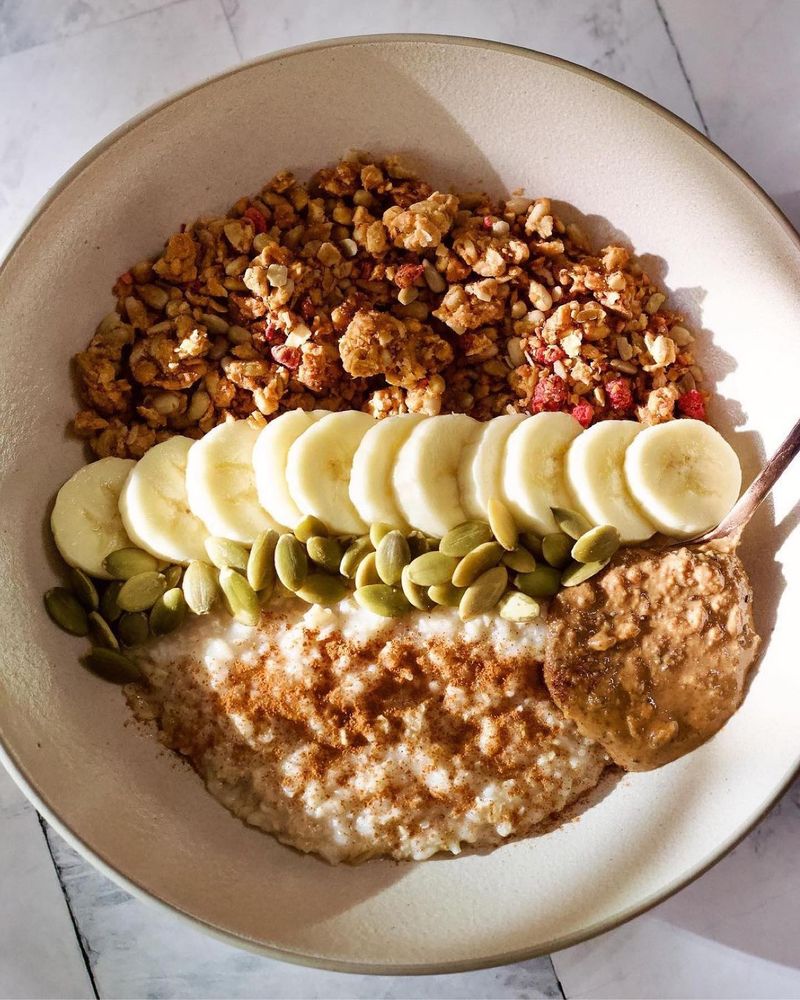
Oatmeal provides exceptional nutrition and value compared to boxed cereals. A large container of old-fashioned or quick oats costs $3-5 and makes 25-30 servings – about 15-20 cents per bowl! This breakfast powerhouse delivers lasting energy through complex carbohydrates and fiber.
The versatility amazes many new oatmeal converts. Savory versions with eggs and vegetables offer a delicious alternative to sweet preparations. Overnight oats solve the time crunch problem for busy mornings, requiring just a few minutes of evening prep.
Health benefits add to the value proposition: studies show regular oatmeal consumption may help lower cholesterol and improve heart health – making it both a financial and nutritional upgrade from processed cereals.
11. Fresh Berries
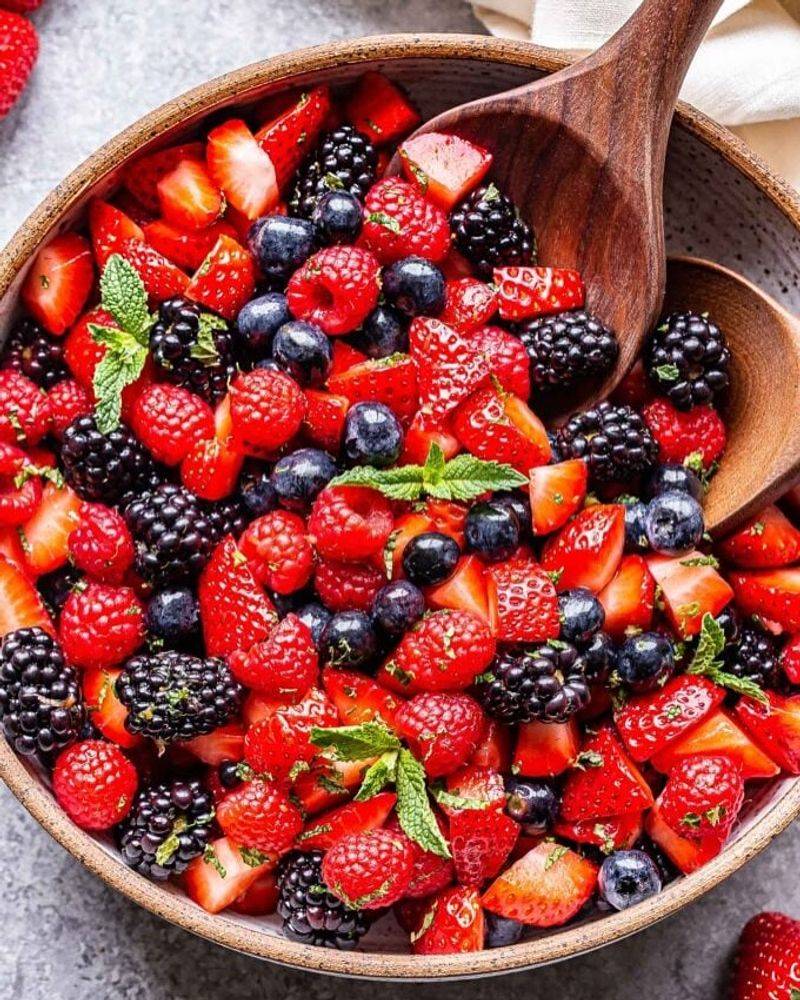
Fresh berries have become a luxury purchase, with small containers of raspberries, blackberries, and blueberries regularly priced at $4-6 each – and that’s not even during off-seasons! These delicate fruits face multiple challenges: they’re labor-intensive to harvest, highly perishable, and sensitive to weather conditions.
Transportation costs hit berries particularly hard since they require careful handling and refrigeration throughout shipping. Organic varieties command even steeper prices, often reaching $7-8 for a small container that barely provides two servings.
Many shoppers report saving berries for special occasions rather than everyday eating, despite their well-known health benefits and kid-friendly appeal.
12. Frozen Fruits
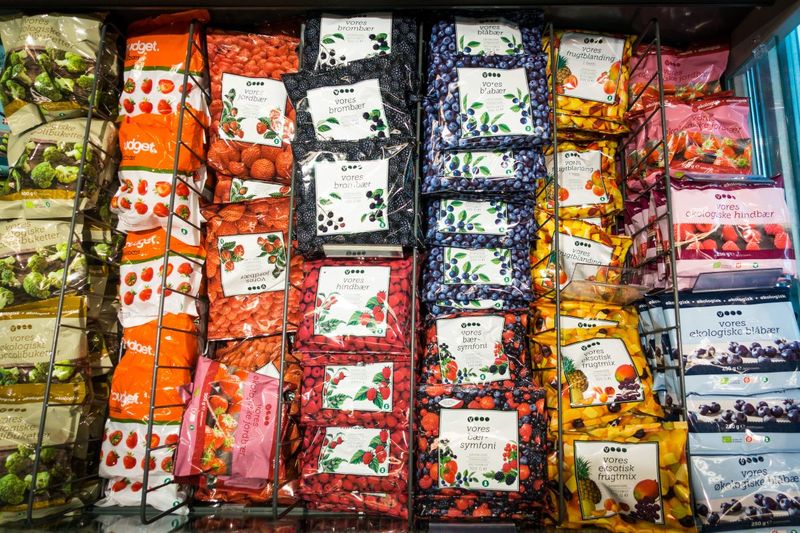
Frozen fruits offer remarkable savings compared to their fresh counterparts, especially for berries and seasonal fruits. A large bag providing 5-6 cups of frozen berries typically costs $8-12 – about one-third the price of equivalent fresh berries. These fruits are flash-frozen at peak ripeness, often preserving more nutrients than fresh options that traveled long distances.
The convenience factor adds significant value. Having frozen fruits on hand eliminates waste from fresh berries turning moldy within days. They work perfectly in smoothies, oatmeal, baked goods, and yogurt parfaits.
For families who love fruit but struggle with rising produce prices, the frozen aisle provides a smart solution without nutritional compromise.
13. Packaged Snacks

Pre-packaged snacks have seen some of the most dramatic price increases in the grocery store. Items like name-brand chips, cookies, and crackers that once cost $2-3 now regularly sell for $4-6 per package. Many manufacturers have employed “shrinkflation” – reducing package contents while maintaining or raising prices.
Individual serving packages hit wallets particularly hard. Those convenient lunch box-sized portions might seem reasonable at $5-6 per box until you calculate the per-ounce cost, which often exceeds $15-20 per pound of actual food!
Families report spending $40-60 weekly just on packaged snacks – a category that provides minimal nutritional value for the escalating cost.
14. Alternative: Popcorn
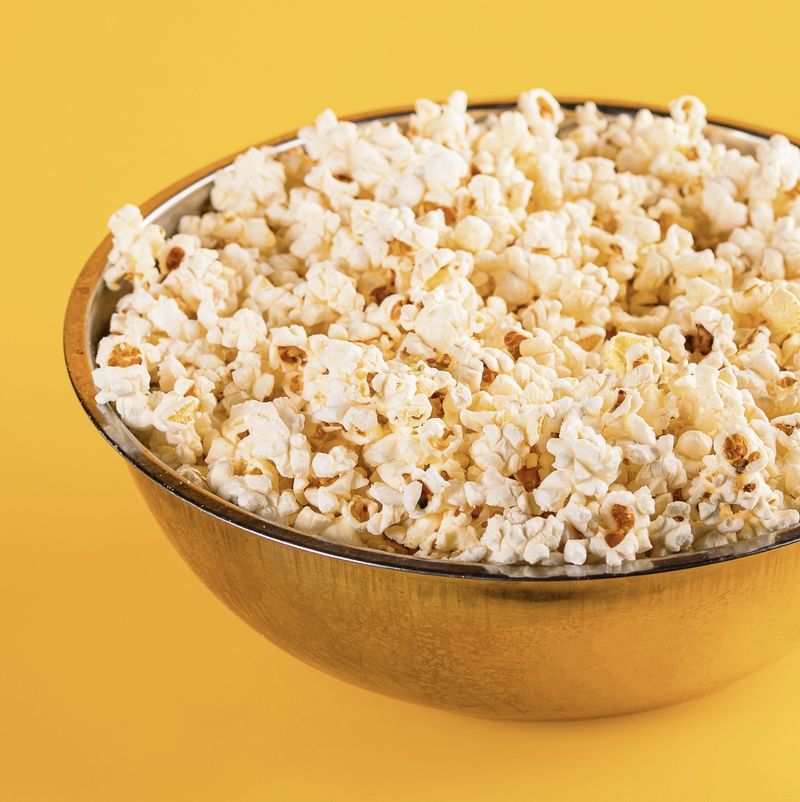
Plain popcorn kernels represent perhaps the best snack value in the entire grocery store. A one-pound bag costs approximately $2-3 and yields about 50 cups of popped corn – enough for weeks of snacking! The transformation is almost magical: those tiny kernels expand to create a satisfying, whole-grain treat.
The health profile impresses nutritionists too. Popcorn provides fiber and whole grains without the excessive sodium, preservatives, and artificial ingredients found in many packaged snacks. Air-popped or prepared with minimal oil, it’s a genuinely healthy option.
Customization options are endless – from classic butter and salt to creative flavors like chili-lime, cinnamon-sugar, or nutritional yeast for a cheesy flavor without dairy.
Leave a comment